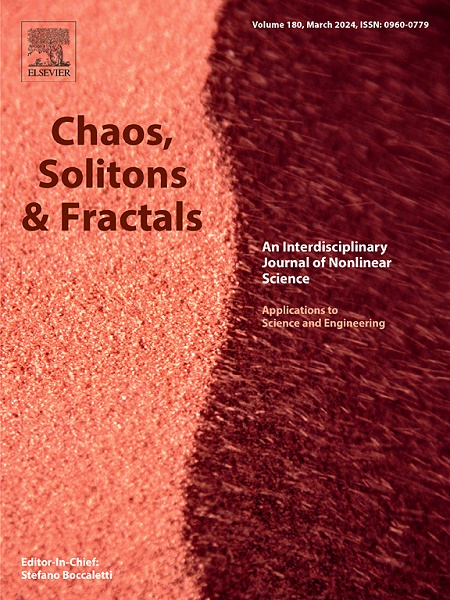异质环境下具有媒介相关非线性发生率的非局部扩散多群体流行病模型动力学
IF 5.6
1区 数学
Q1 MATHEMATICS, INTERDISCIPLINARY APPLICATIONS
引用次数: 0
摘要
为了研究多群体结构和媒体覆盖对异质环境下疾病传播动态的联合影响,本文建立了一个由媒体覆盖驱动的非线性发病率和非线性接触率的非局部扩散多群体SVIR流行模型。首先,我们建立了解的适定性,定义了阈值参数R0m,并确认了模型主特征值的存在性问题。随后,我们得到了系统的阈值动力学,表明当R0m>;1时,疾病灭绝,而当R0m>;1时,疾病持续存在。具体地说,我们研究了一个单群退化扩散模型,处理了半流的基本复制数r0和紧致全局吸引子的存在。进一步,对于r0 >;1,我们证明了系统中存在一个唯一的正稳态,并通过构造一个合适的Lyapunov泛函建立了该特有稳态的全局渐近稳定性。在数值模拟部分,我们通过近似估计的基本繁殖数R0,m来验证疾病灭绝和持续状态。研究结果表明,非局部扩散核函数对疾病动力学有很大影响。此外,治疗率在决定疾病的最终结果方面起着关键作用。虽然媒体报道可能不会改变疾病的最终结果,但它们可以有效地阻止其传播并降低感染密度。本文章由计算机程序翻译,如有差异,请以英文原文为准。
Dynamics of a nonlocal dispersal multi-group epidemic model with media-related nonlinear incidence in heterogeneous environment
In order to investigate the combined impact of multi-group structure and media coverage on disease transmission dynamics in heterogeneous environments, this paper develops a nonlocal diffusion multi-group SVIR epidemic model with nonlinear incidence and nonlinear contact rates driven by media coverage. Initially, we establish the well-posedness of the solution, define the threshold parameter , and confirm the existence problem of the principal eigenvalues of the model. Subsequently, we obtain the threshold dynamics of the system, indicating that when , the disease becomes extinct, whereas when , the disease persists. Specifically, we examine a single-group degenerate diffusion model, addressing the basic reproduction number and the presence of compact global attractors for the semi-flow. Furthermore, for , we demonstrate the existence of a unique positive steady state in the system and establish the global asymptotic stability of the endemic steady state by constructing a suitable Lyapunov functional. In the numerical simulation section, we validate the states of disease extinction and persistence by approximating the estimated basic reproduction number . Our findings indicate that the disease dynamics are heavily influenced by the nonlocal diffusion kernel function. Additionally, the treatment rate plays a pivotal role in determining the ultimate outcome of the disease. While media reports may not alter the final outcome of the disease, they can effectively impede its spread and reduce the infection density.
求助全文
通过发布文献求助,成功后即可免费获取论文全文。
去求助
来源期刊

Chaos Solitons & Fractals
物理-数学跨学科应用
CiteScore
13.20
自引率
10.30%
发文量
1087
审稿时长
9 months
期刊介绍:
Chaos, Solitons & Fractals strives to establish itself as a premier journal in the interdisciplinary realm of Nonlinear Science, Non-equilibrium, and Complex Phenomena. It welcomes submissions covering a broad spectrum of topics within this field, including dynamics, non-equilibrium processes in physics, chemistry, and geophysics, complex matter and networks, mathematical models, computational biology, applications to quantum and mesoscopic phenomena, fluctuations and random processes, self-organization, and social phenomena.
 求助内容:
求助内容: 应助结果提醒方式:
应助结果提醒方式:


